Not every fruit needs to shout in color to stand out. Some keep their appeal tucked beneath earthy tones, wrapped in understated browns that quietly hint at something special inside. Peel them open, and you’re greeted with a striking contrast—creamy, white interiors that surprise the senses.
These brown-on-the-outside, white-on-the-inside fruits may not get the same spotlight as their vibrant cousins, but they carry their own charm: nutty aromas, silky textures, and unexpected bursts of flavor. Some are common; others are tropical treasures rarely seen outside local markets.
In this post, we explore a collection of such fruits—humble in appearance, unforgettable once discovered. Let’s take a closer look at nature’s more muted masterpieces.
1. Langsat (Duku)
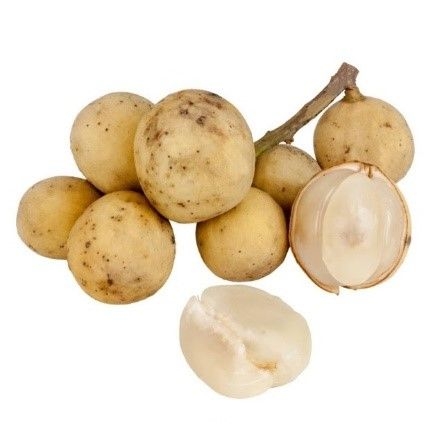
Langsat is a small, round or oval fruit with thin, light brown skin that’s sometimes speckled. Inside, you’ll find translucent white flesh segmented like a citrus fruit. The flavor is sweet with a hint of tartness, and some segments may contain bitter seeds. Native to Southeast Asia, langsat thrives in tropical climates and is a seasonal favorite due to its refreshing, juicy bite.
2. Longan
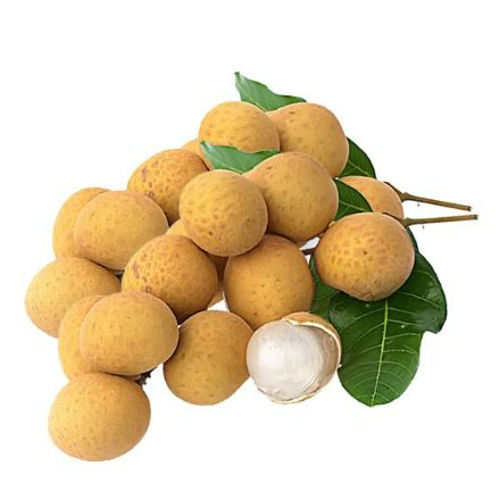
Longan is a close relative of lychee and has a thin, leathery brown shell that easily peels away. Inside lies a single, juicy orb of translucent white flesh surrounding a shiny black seed. Its sweet, musky flavor gives it the nickname “dragon’s eye.” Longan is rich in vitamin C and is commonly used in Asian desserts and herbal teas.
3. Rambai
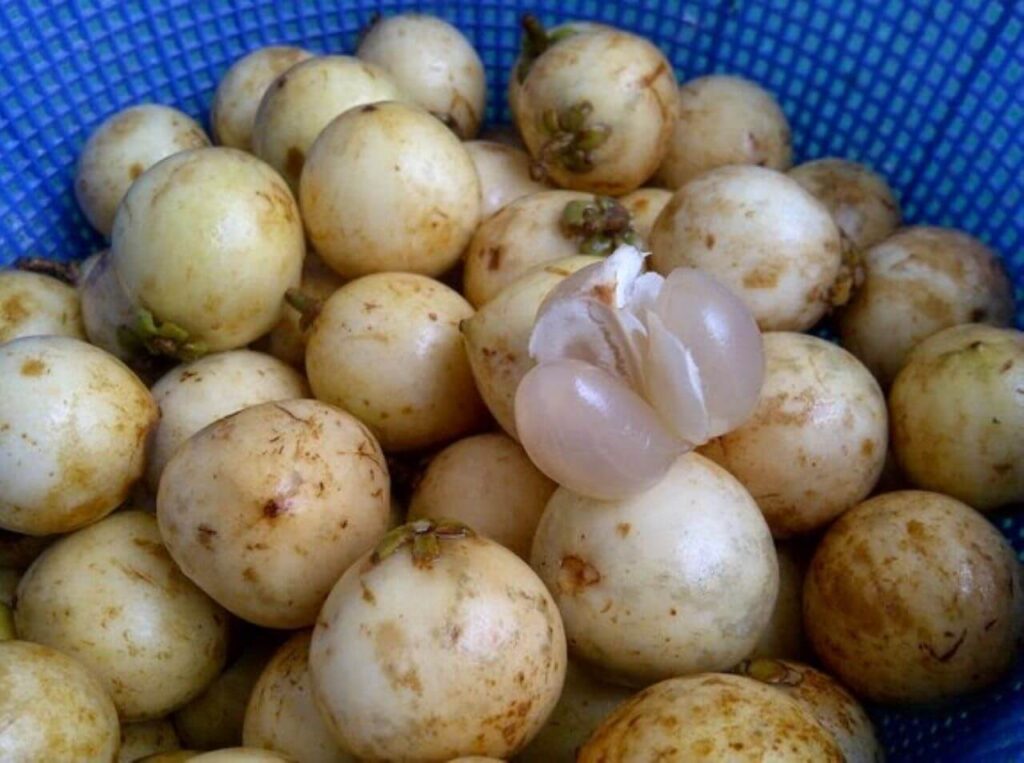
This lesser-known tropical fruit from Southeast Asia has a dusty brown exterior with firm, leathery skin. Inside, you’ll find soft white to translucent pulp surrounding a few seeds. Rambai has a mild flavor, often tart when underripe and sweet when mature. It’s typically enjoyed fresh or made into jams and preserves.
4. Cupuacu
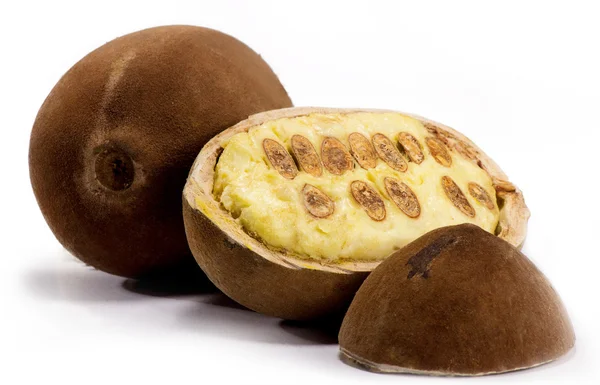
A cousin of cacao, cupuacu grows in the Amazon rainforest. Its large, oval shape is covered in a rough, brown rind. Inside, it holds creamy white pulp with a tropical scent that’s a mix of chocolate and pineapple. Cupuacu is prized for both culinary and cosmetic uses—its pulp is used in juices and sweets, while the seeds yield a nourishing butter.
5. Coconut
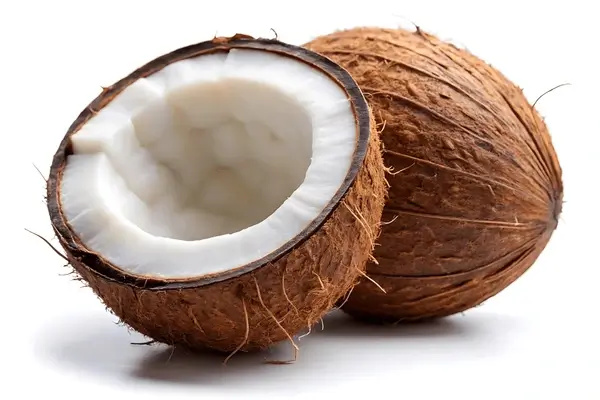
A classic representation of a brown fruit with white inside. Mature coconuts have a hard, hairy brown shell that conceals firm white meat lining the inside wall. The meat is rich in fat and fiber, while the interior often contains sweet coconut water. Coconuts are incredibly versatile—used in drinks, desserts, oils, and even non-food products.
6. Coconut Apple (Sprouted Coconut)
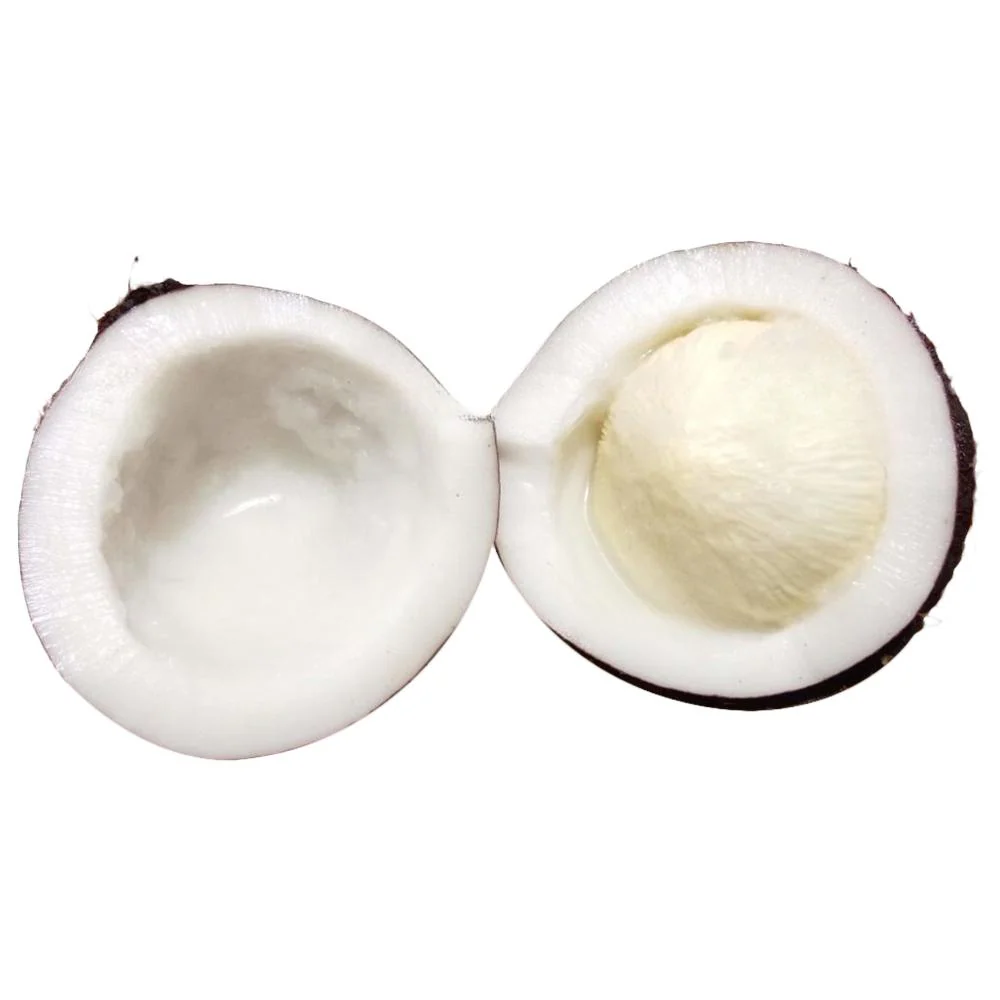
This rare stage of the coconut occurs when the seed begins to germinate inside the shell. The result is a spongy, white, edible mass that grows from the liquid inside the coconut. The outer shell remains brown and fibrous, while the coconut apple inside has a sweet, airy texture reminiscent of cotton candy. It’s considered a delicacy in some cultures.
7. Medlars
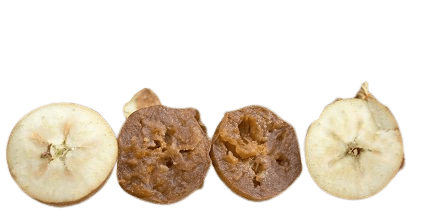
Medlars are small, round fruits with rough, russet-brown skin. Inside, the flesh turns soft and pale cream-white when bletted (overripe). Though unappetizing to some in appearance, the taste is likened to spiced applesauce with notes of dates and cinnamon. Medlars were once a delicacy in medieval Europe and are making a quiet comeback among heirloom fruit lovers.
8. Bosc Pear
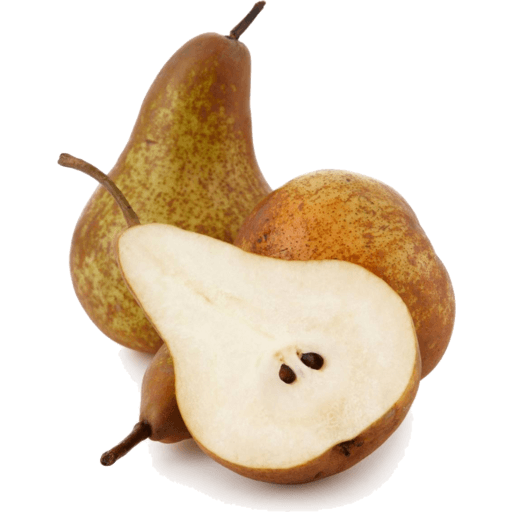
The Bosc pear is known for its russet-brown, slightly rough skin and elongated neck. When ripe, its interior is creamy white, crisp, and honey-sweet. It holds its shape well when baked, making it a favorite in poached desserts and tarts. Though less flashy than green or red varieties, the Bosc’s rustic appearance hides a beautifully textured, flavorful core.
9. Salak (Snake Fruit)
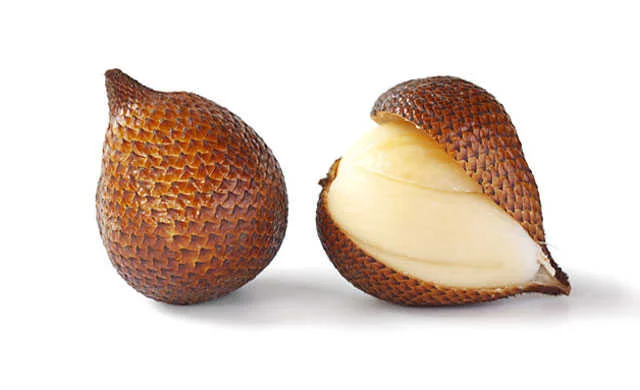
Salak is easily recognized by its reddish-brown scaly skin, which resembles snake scales. Once peeled, it reveals three lobes of white to ivory-colored flesh that is crunchy, juicy, and tangy-sweet. Native to Indonesia, salak is rich in antioxidants and often eaten fresh, though it’s also used in pickles and syrups.
10. Bacuri
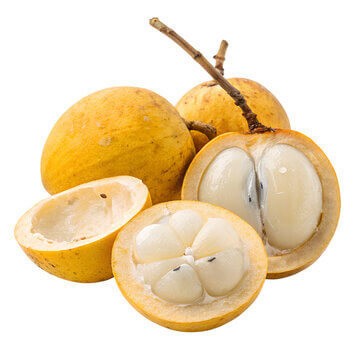
Native to the Amazon basin, bacuri has a thick, rough brown rind. Cracking it open reveals a striking contrast: a sticky, fragrant white pulp that surrounds large seeds. The taste is tart and sweet, often compared to sour cream mixed with tropical fruit. Bacuri pulp is used in sweets, ice creams, and jams, and is valued for its high oil content.
11. Hazelnut Fruit
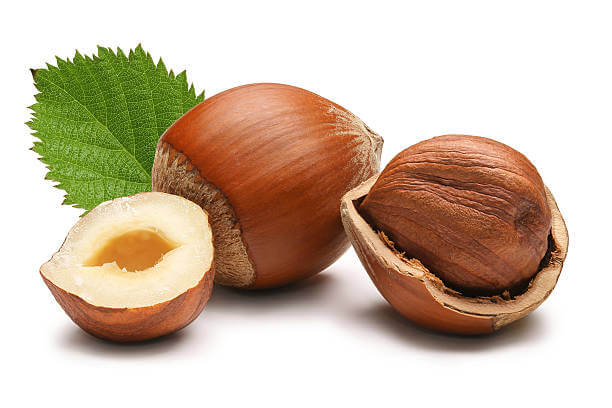
Though we often think of hazelnuts as just nuts, their actual fruit begins with a green husk that turns brown upon maturing. Inside is a woody brown shell, which when cracked, reveals a pale, off-white kernel. The edible seed is rich in healthy fats and flavor, and while not juicy like other fruits on this list, it’s technically a type of fruit.
12. Egremont Russet Apples

These heirloom apples are cloaked in rough, brown russeted skin—quite different from the glossy red or green varieties. Inside, the flesh is white to cream-colored, firm, and sweet with a nutty, almost pear-like flavor. They’re prized in the UK for their complex taste and traditional appeal in cider-making and fresh eating.
13. Sapodilla (Unripe)
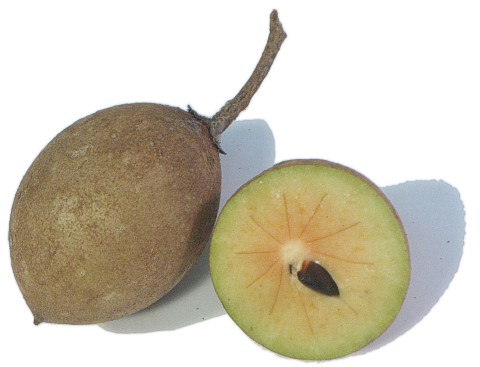
When unripe, the sapodilla fruit has a brown, rough exterior and pale whitish flesh that is firm and tannic. As it ripens, the interior turns darker and sweeter, resembling brown sugar and pear in flavor. Though most enjoy it ripe, identifying it in its early stage reveals how even this sweet fruit starts as a brown-and-white contrast.
14. Breadnut (Mature or Dried)
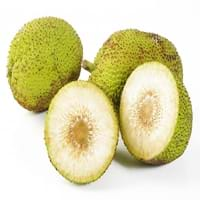
The mature breadnut fruit develops a brown outer husk when dried. Inside, the large seeds, once boiled or roasted, reveal a white starchy interior. These seeds are a staple in some tropical diets and are nutritionally dense—comparable to chestnuts or jackfruit seeds in texture and preparation.
